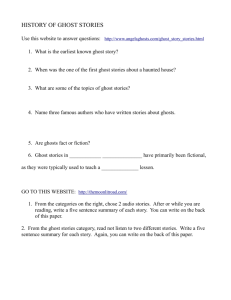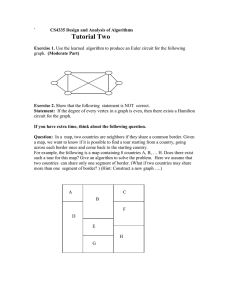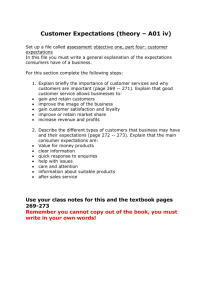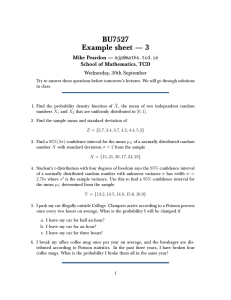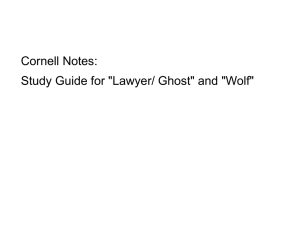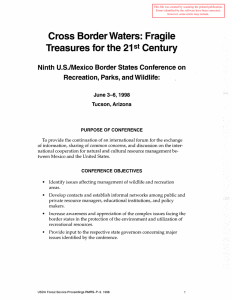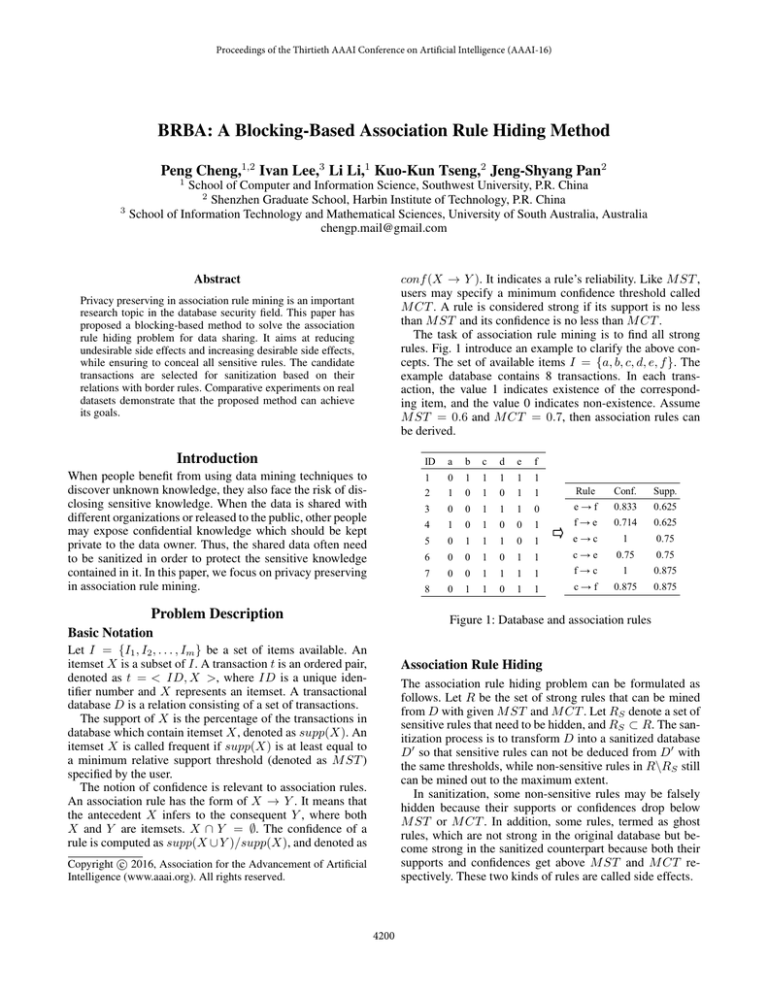
Proceedings of the Thirtieth AAAI Conference on Artificial Intelligence (AAAI-16)
BRBA: A Blocking-Based Association Rule Hiding Method
Peng Cheng,1,2 Ivan Lee,3 Li Li,1 Kuo-Kun Tseng,2 Jeng-Shyang Pan2
1
3
School of Computer and Information Science, Southwest University, P.R. China
2
Shenzhen Graduate School, Harbin Institute of Technology, P.R. China
School of Information Technology and Mathematical Sciences, University of South Australia, Australia
chengp.mail@gmail.com
conf (X → Y ). It indicates a rule’s reliability. Like M ST ,
users may specify a minimum confidence threshold called
M CT . A rule is considered strong if its support is no less
than M ST and its confidence is no less than M CT .
The task of association rule mining is to find all strong
rules. Fig. 1 introduce an example to clarify the above concepts. The set of available items I = {a, b, c, d, e, f }. The
example database contains 8 transactions. In each transaction, the value 1 indicates existence of the corresponding item, and the value 0 indicates non-existence. Assume
M ST = 0.6 and M CT = 0.7, then association rules can
be derived.
Abstract
Privacy preserving in association rule mining is an important
research topic in the database security field. This paper has
proposed a blocking-based method to solve the association
rule hiding problem for data sharing. It aims at reducing
undesirable side effects and increasing desirable side effects,
while ensuring to conceal all sensitive rules. The candidate
transactions are selected for sanitization based on their
relations with border rules. Comparative experiments on real
datasets demonstrate that the proposed method can achieve
its goals.
Introduction
ID
a
b
c
d
e
f
When people benefit from using data mining techniques to
discover unknown knowledge, they also face the risk of disclosing sensitive knowledge. When the data is shared with
different organizations or released to the public, other people
may expose confidential knowledge which should be kept
private to the data owner. Thus, the shared data often need
to be sanitized in order to protect the sensitive knowledge
contained in it. In this paper, we focus on privacy preserving
in association rule mining.
1
2
0
1
1
0
1
1
1
0
1
1
1
1
Rule
Conf.
Supp.
0
e ĺf
0.833
0.625
1
f ĺe
0.714
0.625
0.75
3
4
Problem Description
0
1
0
0
1
1
1
0
1
0
5
0
1
1
1
0
1
e ĺc
1
6
0
0
1
0
1
1
c ĺe
0.75
0.75
7
0
0
1
1
1
1
fĺc
1
0.875
8
0
1
1
0
1
1
c ĺf
0.875
0.875
Figure 1: Database and association rules
Basic Notation
Let I = {I1 , I2 , . . . , Im } be a set of items available. An
itemset X is a subset of I. A transaction t is an ordered pair,
denoted as t = < ID, X >, where ID is a unique identifier number and X represents an itemset. A transactional
database D is a relation consisting of a set of transactions.
The support of X is the percentage of the transactions in
database which contain itemset X, denoted as supp(X). An
itemset X is called frequent if supp(X) is at least equal to
a minimum relative support threshold (denoted as M ST )
specified by the user.
The notion of confidence is relevant to association rules.
An association rule has the form of X → Y . It means that
the antecedent X infers to the consequent Y , where both
X and Y are itemsets. X ∩ Y = ∅. The confidence of a
rule is computed as supp(X ∪ Y )/supp(X), and denoted as
Association Rule Hiding
The association rule hiding problem can be formulated as
follows. Let R be the set of strong rules that can be mined
from D with given M ST and M CT . Let RS denote a set of
sensitive rules that need to be hidden, and RS ⊂ R. The sanitization process is to transform D into a sanitized database
D so that sensitive rules can not be deduced from D with
the same thresholds, while non-sensitive rules in R\RS still
can be mined out to the maximum extent.
In sanitization, some non-sensitive rules may be falsely
hidden because their supports or confidences drop below
M ST or M CT . In addition, some rules, termed as ghost
rules, which are not strong in the original database but become strong in the sanitized counterpart because both their
supports and confidences get above M ST and M CT respectively. These two kinds of rules are called side effects.
c 2016, Association for the Advancement of Artificial
Copyright Intelligence (www.aaai.org). All rights reserved.
4200
Blocking Technique
performs sanitization by blocking 1’s and blocking 0’s simultaneously. The algorithm adopts the parameter A01 to
control the proportion of blocked 0’s.
BRBA Algorithm
BRBA utilizes the concept of border rules to select suitable
transactions for sanitization. The algorithm aims to achieve
the following goals:
55
100
Mushroom, 10 sensitive rules
50
# ghost rules
BRBA
BA
45
40
70
Mushroom, 10 sensitive rules
BRBA
BA
40
35
30
0.1
22
0.3
0.5
A01
0.7
10
0.1
0.9
300
Bms-1, 10 sensitive rules
20
0.3
0.5
A01
0.7
0.9
Bms-1, 10 sensitive rules
18
BRBA
BA
16
14
# ghost rules
250
12
200
150
BRBA
BA
100
50
10
0.1
70
0.3
0.5
A01
0.7
0
0.1
0.9
200
Bms-2, 10 sensitive rules
60
# ghost rules
# missing non-sensitive rules
# missing non-sensitive rules
# missing non-sensitive rules
Some association rule hiding strategies have been proposed
(Gkoulalas-Divanis and Verykios 2010). However, most of
them are distortion-based techniques, which conceal rules
by turning 1’s into 0’s or 0’s into 1’s on some selected items.
This means that cooperating parties cannot know which data
is original and which has been modified into false values
when they receive the shared data. This is unacceptable in
some cases, such as medical or health applications.
In contrast, the blocking-based techniques sanitize the
data through replacing some items with the unknown symbol ”?”. In this way, support or confidence of a rule is no
longer a single value, but mapped into an interval [min supp,
max supp] or [min conf, max conf]. A sensitive rule can be
hidden by reducing its minimum support or minimum confidence below M ST or M CT . A non-sensitive rule that
is strong originally may be hidden after blocking because
its minimum support or minimum confidence drops below
M ST or M CT . A rule that is not strong originally could
become strong after blocking if both its maximum support
and maximum confidence get above M ST and M CT .
In this paper, we propose a blocking-based association
rule hiding approach, named as BRBA (Border Rule based
Blocking Algorithm).
50
BRBA
BA
40
30
0.1
0.3
0.5
A01
0.7
0.9
150
0.3
0.5
A01
0.7
0.9
Bms-2, 10 sensitive rules
BRBA
BA
100
50
0
0.1
0.3
0.5
A01
0.7
0.9
Figure 2: Side effects with increasing values of A01
1. Reduce the minimum support or confidence of each sensitive rule below M ST or M CT by a Safety Margin (SM ).
2. Minimize the undesirable side effects, i.e., the number of
missing non-sensitive rules.
Experimental Results and Analysis
We compared BRBA empirically with the algorithm BA in
(Verykios et al. 2007) on three real datasets: Mushroom,
Bms-1 and Bms-2. The Safety Margin was applied in both
algorithms. Fig. 2 shows the side effects of two algorithms
with different A01 values (0.1, 0.3, 0.5, 0.7, 0.9).
As indicated in Fig. 2, the number of ghost rules grows accordingly with increasing values of A01 . It demonstrates that
blocking more 0’s can really increase the number of ghost
rules. This is desirable since more ghost rules can improve
the safety of sensitive rules. Generally, BRBA may generate
more ghost rules, and less or approximately same missing
non-sensitive rules than BA on each test case. It shows that
utilizing the concept of border rules can guide the BRBA
algorithm to produce more desirable side effects and less
undesirable side effects.
3. Maximize the desirable side effects, i.e., the number of
ghost rules.
Border rules have the following features. Their supports
or confidences are close to M ST or M CT and they are very
easy to become missing rules or ghost rules in sanitization.
Border rules can be divided into positive border rules and
negative border rules. A positive border rule is easy to be
concealed mistakenly and a negative border rule is easy to
become a ghost rule. Ghost rules are desirable because it
beholds the same features with hidden sensitive rules. They
both contain the symbol ”?”. Their maximum supports and
confidences are greater than M ST and M CT , but their minimum supports or confidences are less than M ST or M CT .
If malicious attackers try to expose sensitive rules with these
traits in the released database, they will find many ones and
cannot determine which ones are sensitive. So, increasing
ghost rules favors preventing privacy breach.
Candidate transactions are evaluated according to positive and negative border rules they contain. Candidates containing fewer positive border rules and more negative border
rules are given high priorities for sanitization.
In order to prevent malicious attackers from recovering
the database by replacing all ”?” with 1’s or with 0’s, BRBA
References
Gkoulalas-Divanis, A., and Verykios, V. S. 2010. Association Rule Hiding for Data Mining, volume 41 of Advances
in Database Systems. Kluwer.
Verykios, V. S.; Pontikakis, E. D.; Theodoridis, Y.; and
Chang, L. 2007. Efficient algorithms for distortion and
blocking techniques in association rule hiding. Distributed
& Parallel Databases 22(1):85–104.
4201

